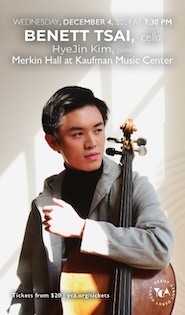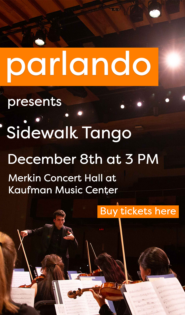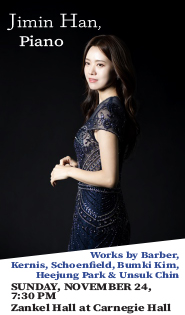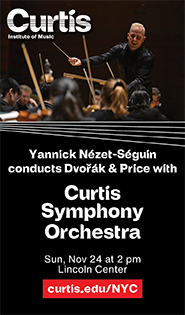What will the fall music season look like? Smaller, less epic and more soloistic—if it happens
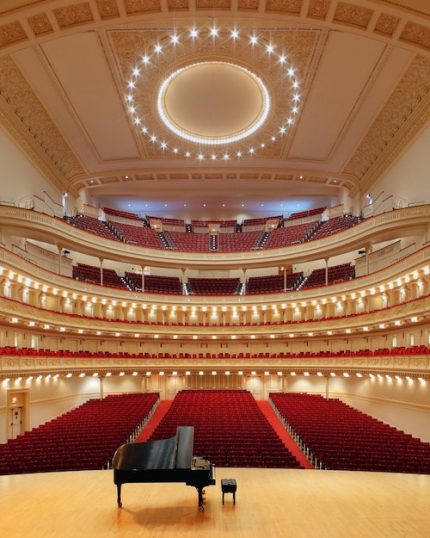
The deadly Covid-19 pandemic continues to cut a swathe across the country and the world—1,340,441 cases in the U.S. alone with 79,526 deaths and counting. While the risk to the general public remains lower than for the elderly and those with preexisting conditions, the highly infectious nature of the virus, its evolving symptoms, and the near-total lack of effective treatment continue to create and sustain widespread fears.
A vaccine would be a godsend but is unlikely to happen within a year and perhaps not at all. After decades we still have no vaccine for AIDS and several other viral diseases. And if Covid-19 is mutating, as some reports indicate, the virus then becomes even more of a moving target for scientists and epidemiologists. Even if the cases and deaths continue to decline and there is a lull with the warmer weather, most experts seem to agree that a return in the fall is inevitable.
So, with the coronavirus not going anywhere, it’s difficult to envision what a 2020-21 classical music season might look like. For some of the more self-righteous online trolls, even having a conversation about the return of classical music events means exulting in a death cult and should be forbidden from public discourse.
Get over yourself. At some point classical events—and theater and dance and jazz—are going to return, and likely while the cloud of the virus is still hovering over us. Whether it happens this fall or not, it’s fair to talk about the practical issues involved and what classical music genres have the most likely chance of returning the soonest.
Will musicians want to perform?
The most obvious question is, will any musicians even want to perform live events? Even if there is a decline in new cases, most people will remain wary of social interactions—audience members and musicians alike—in any space where more than a handful of people are gathered.
Most musicians want to perform rather than teach exclusively. It is likely that some will elect to play small live events, albeit with strict social distancing and masking as much as possible. But how can we create spaces and reconfigure venues in order to allow this to happen?
Audience seating
Modified audience seating seems like the easiest part of the equation, at least logistically. Depending on the width of seating, attendees will have to be spaced out with two or possibly three empty seats roped off between seats.
Of course, the problem then becomes a significant loss of revenue. A recent study by a major U.S. performing arts center (unnamed since it remains private) concluded that rearranged audience seating that maintains strict social distancing would reduce the venue’s 2,400 available seats to 300. Most comparable venues for opera and orchestral events would likely be about the same. With capacity reduced to a mere 12.5%, selling tickets for a single performance isn’t much more attractive economically than staying closed. For midsize and smaller venues, available seats would be even more miniscule.
But how many performances sell out every night? Not many. And with the demographic for classical events heavy on seniors, concerts are likely to be less populated anyway in the near future, since many seasoned citizens will, understandably, decline to attend and take the risk. That will serve to mitigate the loss of capacity.
Also, why not add performances to offset the loss of seats? Instead of doing a single performance, a string quartet might do a pair, doubling their available, socially distanced seating. Instead of three performances of a single program, a symphony orchestra might add a matinee or an extra evening repeat.
Liability waiver
A liability waiver will likely have to be essential before any classical concerts can return–for audience members and participating musicians alike. That would apply to all ticketed events—theater, ballet, pop, etc., for the foreseeable future.
No hall or presenting organization—many of which are already teetering on the brink of bankruptcy due to the virus and shutdown—is going to take the chance of reopening if they will be open to lawsuits should a staffer, patron or family member contract the virus from an event. A contract of carriage would have to be in place and musicians and ticket-buyers will likely have to agree to assume the risk.
Opera
The classical genre that will take the longest time to recover will invariably be grand opera. As every singer knows, when people are singing full-out, spit can fly more freely than on a teenager’s date. Singers can’t very well wear masks. Do we then have to dispense with staged opera entirely? If so, could we make do with social-distanced concert performances?
The scuttlebutt is that many large opera houses are quietly writing off their fall productions while hoping desperately for a vaccine or life-saving therapeutic to arise in the next six months, in order to reopen in January 2021.
More possible is an earlier return by chamber opera companies. Social distancing becomes even more challenging in tight venues and black box spaces. Yet—while they can’t do the Ring—storefront opera companies have more options in terms of mounting smaller works and creating innovative stagings. One could see the more nimble small companies finding a way to come back online sooner than their larger colleagues.
Orchestra concerts
After opera, no genre is more of a challenge than symphony orchestras, often with up to a hundred musicians sitting on stage in very close proximity.
If—and it’s a big if—symphony musicians are even game and orchestra concerts are allowed to take place, how can this possibly be accomplished even if audience spacing is done?
What can one do? Instant temperature tests before anyone walks onstage? Masks for all except wind and brass players? Single-stand strings and high dividers between players—which would create a balancing nightmare? Even if musicians agree to the risk and the inevitable constraints, the logistics seem daunting.
Chorus concerts
Chorus events will be nearly as difficult as opera for the reasons stated above. Possibly singers can be more widely spaced than in the usual close quarters but at what cost to cohesion and a well-blended sound? Any vocal group would likely also have to be moved back further from the front of the stage—and/or rope off the first five rows—to maintain a safe zone for audience members.
Chamber concerts
Chamber concerts have a better chance of returning this fall than nearly any other genre. Again, one could see regular monitoring by ensemble musicians and temperature tests before the curtain, as well as distancing without wholly sacrificing balancing.
Solo recitals
If there is a silver lining in this epic challenge to classical live performance, it is that solo recitals will assume much greater prominence for a time before performances by larger groups reappear. With just one or two people onstage and careful audience spacing, the first live classical event to open will likely be a piano recital. Perhaps the languishing art song genre will make a comeback as well.
As with all artists, at some point classical musicians will want to perform again. Audience members too will brave the risk to come out for the excitement of experiencing a live event rather than one transmitted via streaming, YouTube or on a recording. Whether it happens this fall, in January of 2021 or not till next spring, creative solutions will likely be found.
